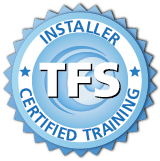
Moving your network into the desktop takes time, initiative and planning. But most of all, it takes knowledge. Both the installer and the end-user need to understand what is available and what is feasible.
This course is designed for those who design, install or maintain fiber optic systems in commercial buildings and other facilities. It identifies you as an installer who demonstrates a practical knowledge of fiber optic theory, codes, standards and practices widely accepted in commercial buildings and customer-owned outside environments (campus).
This course incorporates hands-on training of fiber terminations, cable preparations, installation practices and certification testing procedures. Students will learn skills applicable to all the functions required to safely and competently install advanced fiber communications cabling.
This course will give students a deeper understanding of how to assemble, cable, and test various commercial building systems utilizing, FTTD, a high-bandwidth solution that expands the traditional fiber backbone system directly to desktops and pushes the available bandwidth beyond 10G. This course also explores passive optical networks (PON), commonly utilized in FTTH applications, and its use in commercial buildings.
Students must pass exam to be certified.
ETA FOI Certification
NETA Recognized
TR-FTTD is approved for 8 CTDs
This course will allow students to:
Lectures are self-paced and provide valuable information that will help you pass the certification exam. Online access is accessible for 1 year from the date you register. The lecture portion of this class is online and self-paced through our Learning Management System. Students receive a personal login to the platform providing access to lectures, study guides, practical exam, practice tests and technical exam. We recommend that the students complete the lecture before attending class. Lectures prepare students for the instructor led hands-on lab portion of the course. On the last day of the class each student will take a 75-question multiple choice test and if they pass, they will receive their certification in 2-3 weeks. Approximate time needed to complete lectures: 16-20 hours.
Lecture Topics Include
TL-01B – OSP Loose Tube Armored Cable Preparation
TL-01E – Buffer Tube Fan Out Kit (BTFO)
TL-02A – Fusion Splicing
TL-03A – Mechanical Splice Connector
TL-03F – Splice-On Connector (Single Mode)
TL-04A – Mechanical Splice
TL-05A – Pigtail Fusion Splice
TL-06A – Power Meter & Light Source Testing
TL-07A – Optical Time Domain Reflectometer (OTDR) Testing
TL-12A Wall Mount Segment Assembly (Pigtails) & Testing
TL20-A – Determining Power and Loss Budgets
Knowledge or experience in the areas of Fiber Optic Advantages and Applications, Cables, Connectors and Terminations, Enclosures and Panels, and Test Equipment would be helpful, but is not required.
Students that have a desire to work in the field testing and terminating fiber optic networks leading to a certification.
Remember, if you have 5 or more students, we can bring our class to you at your own facility – saving you time and money!
Any of our courses can be customized to focus on your needs – like using specific equipment, or working in a particular situation.
FiberOptic.com and The Fiber School may cancel a course that lacks sufficient enrollment a week before it is scheduled to begin. When a course is cancelled, we make every effort to notify all registered students promptly. If The Fiber School cancels the course, students may elect to transfer to a future date.
Students who cancel within a week of the start of the course will be subject to a 50% cancellation fee and onsite or custom courses will be subject to a 100% cancellation fee.